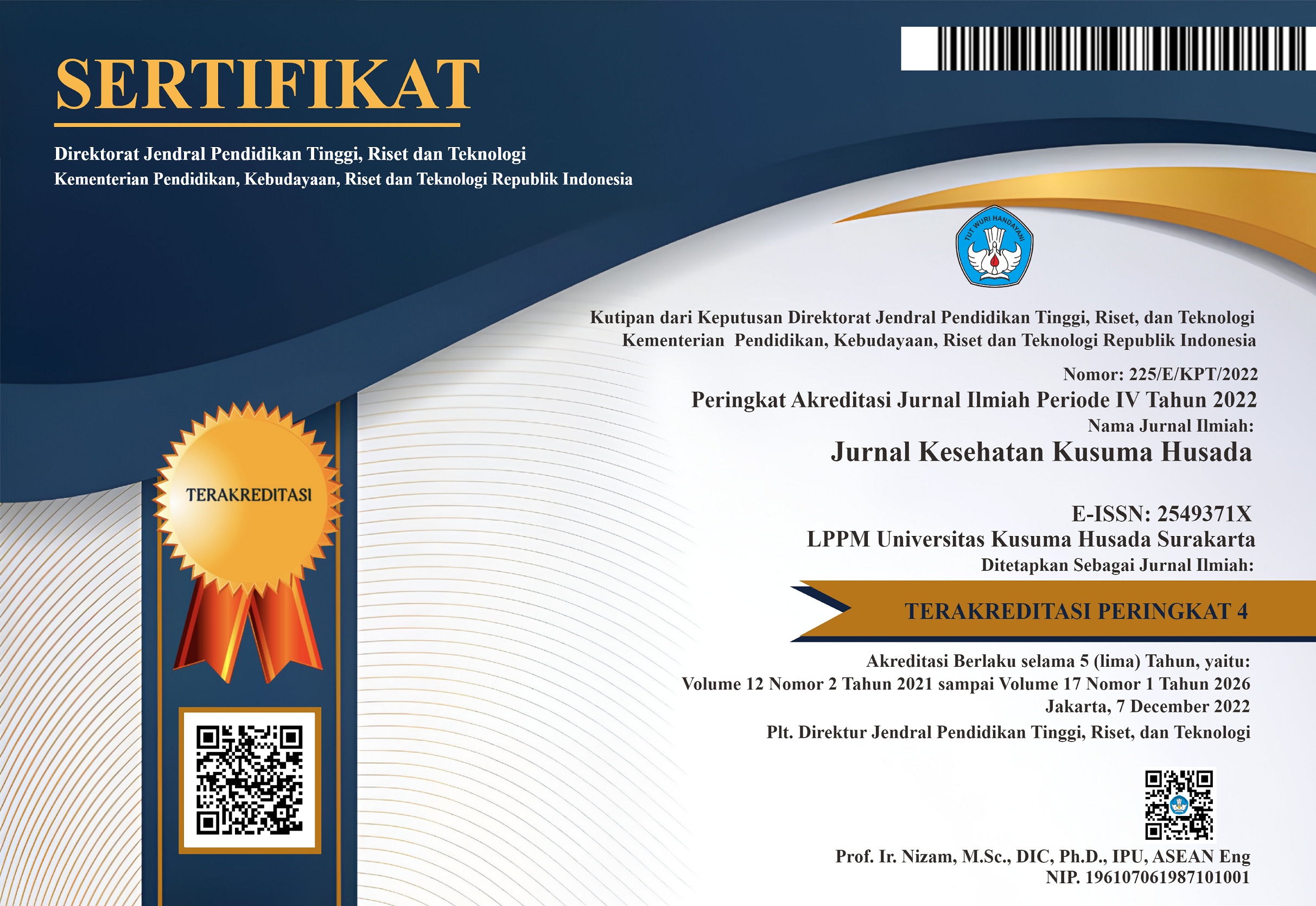HUBUNGAN RIWAYAT PEMBERIAN ASI DAN POLA ASUH IBU DENGAN KEJADIAN GIZI KURANG PADA ANAK BALITA DI KECAMATAN WONGSOREJO BANYUWANGI
Abstract
Kondisi riwayat ASI di Indonesia saat ini cukup memprihatinkan. Rendahnya pemberian ASI secara Eksklusif dipengaruhi oleh beberapa faktor, yakni ketidaktahuan ibu tentang pentingnya ASI, cara menyusui dengan benar, serta pemasaran susu formula. Pola asuh pada tahun pertama kehidupan sangatlah penting untuk perkembangan anak. Pola asuh balita yang kurang baik di Indonesia salah satunya ditunjukkan dengan masih rendahnya dukungan ibu dalam memonitor pertumbuhan dan perkembangan anak balita. Penelitian bertujuan untuk menganalisis hubungan riwayat pemberian ASI dan pola asuh terhadap kejadian gizi kurang. Penelitian dilaksanakan di Kecamatan Wongsorejo, kabupaten Banyuwangi Jawa Timur. Penelitian ini menggunakan metode kuantitatif dengan rancangan kasus kontrol. Variabel dependen gizi kurang dan variabel independen riwayat pemberian ASI dan pola asuh Ibu. Jumlah subjek sebanyak 174 balita yang diambil secara Fixed Disease Sampling, melalui wawancara langsung dan observasi. Analisis bivariate menggunakan uji C-Square dan analisis multivariat menggunakan uji regresi logistic biner. Hasil penelitian menunjukkan sebagian besar riwayat pemberian ASI pada balita adalah ASI eksklusif pada kasus (83.9%) dan kontrol (97.7%). Hasil analisis menunjukkan bahwa riwayat pemberian ASI (OR=0.123; p<0.05), pola asuh pemberian makan (p<0.05) dan pola asuh kesehatan (p<0.05) berhubungan secara signifikan dengan kejadian gizi kurang. Terdapat hubungan antara riwayat pemberian ASI dan pola asuh ibu dengan kejadian gizi kurang.
The current history of breast milk in Indonesia was quite alarming. The lack of exclusive breastfeeding was influenced by several factors, namely mother’s ignorance about the importance of breastfeeding, how to breastfeed properly, and the marketing of formula milk. The pattern of care in the first year of life was very important for the development of children. Poor toddler pattern in Indonesia was one of them shown by the low support of mother in monitoring growth and development of children under five. This study aimed to analyze association of breastfeeding history and parenting mother to the incidence of malnutrition and was conducted in Wongsorejo, Banyuwangi, East java. This study used the quantitative case-control design. Dependent variable in this study was malnutrition and independent variable were history of breastfeeding and parenting mother. The number of samples were 174 under five children taken by a Fixed Disease Sampling. The data was gained through in-depth interview and observation. History of Breast Feeding and Parenting Mother was taken by interview and used a quesstionarry. Bivariate analysis used chi-square analysis and multivariate analysis used binarry regression. Most of the breastfeeding history among under five children was exclusive breastfeeding with case (83.9%) and control (97.7%). Correlation analysis showed that history brestfeeding (OR=0.123; p<0.05), feeding practices of parenting mother (p<0.05) and health parenting mother (p<0.05) were related positively to malnutrition. There is a relationship of breastfeeding history and parenting mother to malnutrition among under five children.
The copyright of the published articles belongs to Jurnal Kesehatan Kusuma Husada.

This work is licensed under a Creative Commons Attribution 4.0 International License.













